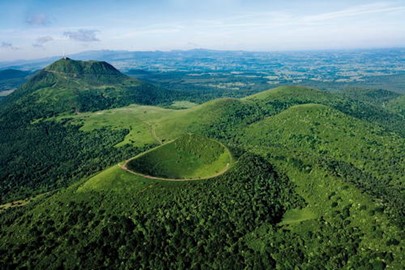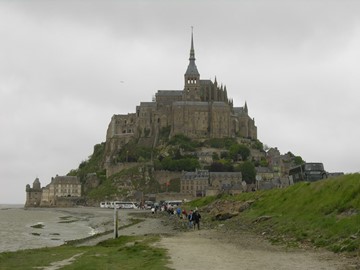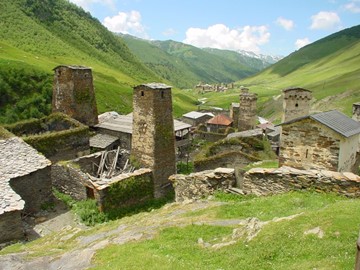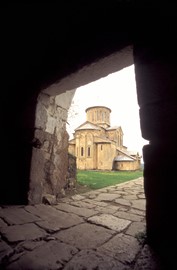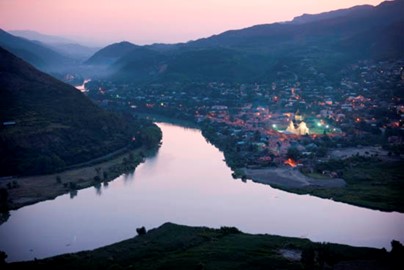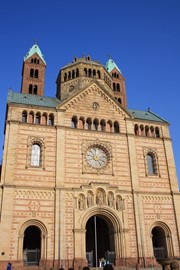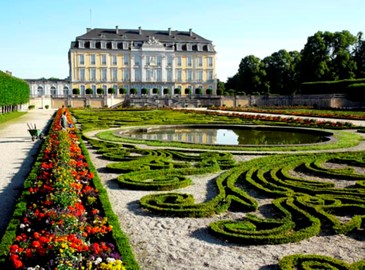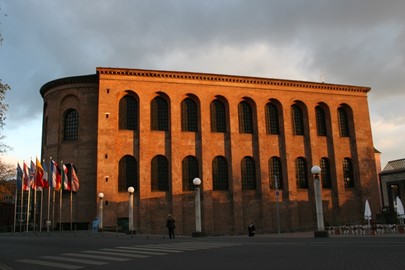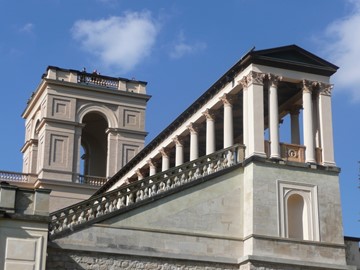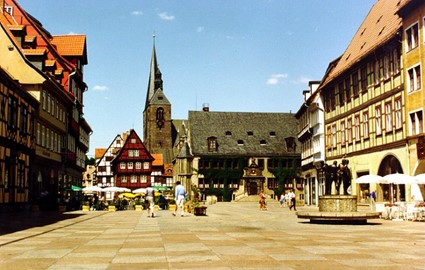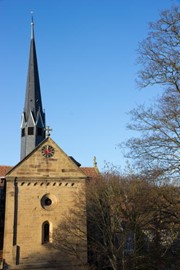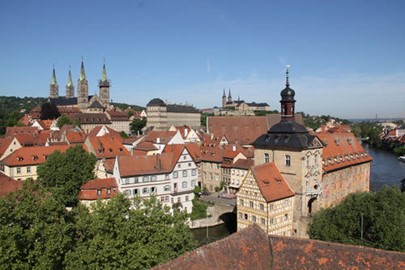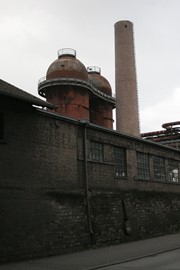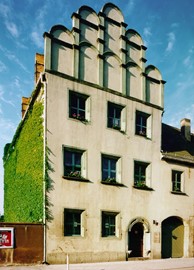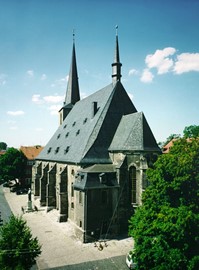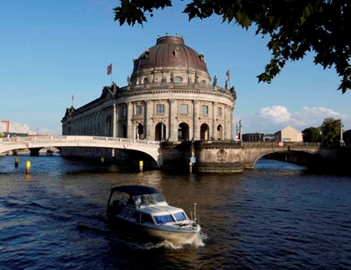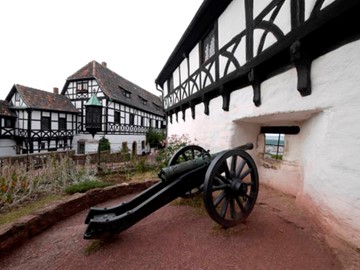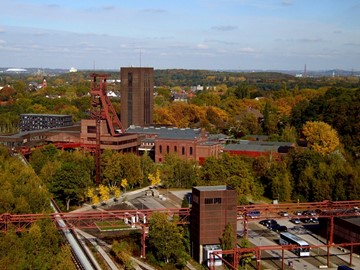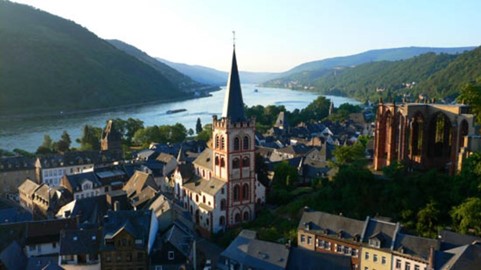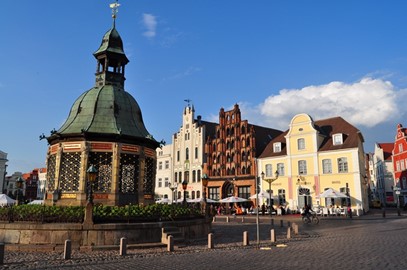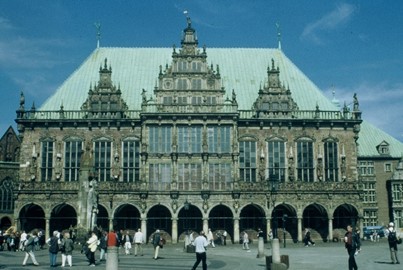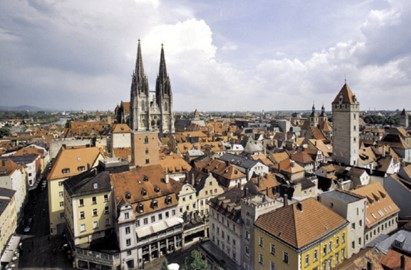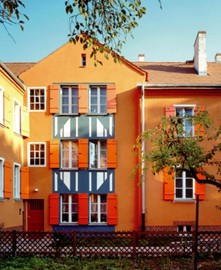region :: europe and north america
Chaîne des Puys
Chaîne des Puys, a UNESCO World Heritage site in France, is a stunning volcanic landscape of over 80 dormant cones, craters, and lava domes. Formed over millennia, its diverse geology offers a natural laboratory for studying volcanic processes. The area features rolling green hills and dramatic peaks, showcasing nature’s raw beauty. Rich in biodiversity, it supports unique flora and fauna adapted to volcanic soil. This site blends scientific value with breathtaking scenery, drawing geologists and visitors a... Read More
Mont Saint Michel
Mont-Saint-Michel, a UNESCO World Heritage site in France, is a medieval island fortress rising dramatically from the sea. Built atop a rocky mount, its abbey and winding streets reflect centuries of architectural ingenuity. Once a pilgrimage site, it blends Gothic and Romanesque styles seamlessly. Surrounded by shifting tides, it creates a striking silhouette against the horizon. This historic marvel showcases a unique harmony of nature and human creation.
Upper Svaneti
Upper Svaneti, a UNESCO World Heritage site in Georgia, is a remote mountainous region preserving medieval villages and stone towers. Nestled among rugged peaks, its ancient settlements reflect a unique cultural heritage shaped by isolation. The distinctive Svan towers, built for defense, stand as architectural icons of resilience. This site blends stunning natural beauty with a rich historical legacy. It offers a glimpse into a traditional way of life largely unchanged for centuries.
Gelati Monastery
Gelati Monastery, a UNESCO World Heritage site in Georgia, is a medieval complex founded in 1106 by King David IV. Known for its stunning frescoes and mosaics, it served as a center of learning and culture during Georgia’s Golden Age. The main cathedral, with its elegant dome, exemplifies Georgian ecclesiastical architecture. Surrounding buildings include an academy that preserved ancient manuscripts. This site reflects the nation’s rich spiritual and intellectual heritage. Its serene hilltop setting enhanc... Read More
Mtskheta
Mtskheta, a UNESCO World Heritage site in Georgia, is an ancient city revered as the birthplace of Christianity in the region since the 4th century. It features historic churches like Svetitskhoveli Cathedral, adorned with intricate frescoes and stone carvings. The site reflects Georgia’s early religious and architectural heritage, blending spiritual significance with cultural legacy. Nestled at a river confluence, its serene setting enhances its timeless charm. This historic gem offers a glimpse into Georg... Read More
Speyer Cathedral
Speyer Cathedral, a UNESCO World Heritage site in Germany, is a monumental Romanesque basilica completed in the 11th century. Known for its massive red sandstone structure and four towering spires, it served as a burial place for Holy Roman Emperors. The cathedral’s innovative vaulted ceiling influenced medieval architecture across Europe. Its grand scale and intricate details reflect the power of the church and empire. This historic site stands as a testament to Germany’s architectural and cultural legacy.... Read More
Castles of Augustusburg and Falkenlust
The Castles of Augustusburg and Falkenlust, a UNESCO World Heritage site in Germany, are exquisite 18th-century Rococo palaces built for prince-archbishops. Augustusburg boasts opulent interiors with frescoed ceilings and grand staircases, reflecting aristocratic splendor. Nearby, Falkenlust, a smaller hunting lodge, features delicate design and serene gardens. Together, they exemplify the elegance and extravagance of the Baroque era. This site offers a glimpse into Germany’s princely past and architectural... Read More
Trier
Trier, a UNESCO World Heritage site in Germany, is one of the oldest cities in the country, founded by the Romans in the 1st century BCE. It boasts an impressive collection of Roman monuments, including the Porta Nigra gate, an amphitheater, and the grand Constantine Basilica. The city also features well-preserved Roman baths and a bridge spanning the river, showcasing ancient engineering. Beyond its Roman legacy, Trier includes medieval and Baroque architecture, reflecting its long history. This site offer... Read More
Potsdam
The Palaces and Parks of Potsdam and Berlin, a UNESCO World Heritage site in Germany, form a magnificent ensemble of Prussian architecture and landscaped gardens from the 18th and 19th centuries. Highlights include the opulent Sanssouci Palace and its terraced gardens, reflecting royal elegance. This vast complex showcases a blend of Baroque, Rococo, and Neoclassical styles, designed for monarchs like Frederick the Great. The sprawling parks, dotted with pavilions and fountains, exemplify meticulous plannin... Read More
Garden Kingdom of Dessau Wörlitz
The Garden Kingdom of Dessau-Wörlitz, a UNESCO World Heritage site in Germany, is an 18th-century landscape masterpiece blending nature and architecture. Designed as an Enlightenment-era retreat, it features elegant palaces, serene lakes, and meticulously planned gardens. This pioneering park reflects innovative landscaping ideas of its time. Its picturesque vistas and neoclassical structures draw visitors into a harmonious vision. The site offers a glimpse into aristocratic leisure and aesthetic ideals. It... Read More
Quedlinburg
Quedlinburg, a UNESCO World Heritage site in Germany, is a medieval town renowned for its well-preserved half-timbered houses and cobblestone streets. Dating back over 1,000 years, it features a Romanesque castle hill and collegiate church, reflecting its historical significance as an early German settlement. The town’s charming architecture showcases a blend of Gothic and Renaissance styles. Once a key center in the Holy Roman Empire, it preserves a rich cultural legacy. This site offers a captivating glim... Read More
Maulbronn Monastery
Maulbronn Monastery, a UNESCO World Heritage site in Germany, is a remarkably preserved medieval Cistercian complex founded in 1147. Its Romanesque and Gothic architecture includes a grand church, cloisters, and monastic buildings, showcasing monastic life’s simplicity and ingenuity. Surrounded by fortified walls, it reflects centuries of religious and cultural history. The site features an innovative water management system, highlighting medieval engineering. This tranquil complex offers a vivid glimpse in... Read More
Bamberg
Bamberg, a UNESCO World Heritage site in Germany, is a medieval town renowned for its well-preserved historic center. Built on seven hills, it features a striking cathedral, half-timbered houses, and a unique old town hall perched over a river. The town reflects a blend of Romanesque and Baroque architecture from the 11th to 18th centuries. Known for its brewing heritage, it exudes a timeless charm. This site offers a captivating glimpse into Germany’s cultural and architectural past.
Volklingen Ironworks
The Völklingen Ironworks, a UNESCO World Heritage site in Germany, is a vast industrial complex from the 19th and 20th centuries, once a leading iron production site. Preserved in its entirety, it features towering blast furnaces, machinery, and workers’ facilities, showcasing the Industrial Revolution’s scale. This site offers a striking look at technological heritage and labor history. Its rusted structures stand as a monument to a bygone era of heavy industry. Today, it serves as a cultural venue, blendi... Read More
Luther Memorials
The Luther Memorials, a UNESCO World Heritage site in Germany, honor Martin Luther’s pivotal role in the Protestant Reformation. These sites include historic buildings like the house where Luther lived and the church where he nailed his 95 Theses. Preserved from the 16th century, they reflect the era’s religious and cultural shifts. The architecture ranges from simple homes to grand Gothic structures, showcasing period design. This collection offers a tangible link to a transformative moment in European his... Read More
Classical Weimar
Classical Weimar, a UNESCO World Heritage site in Germany, is a historic town that flourished as a cultural hub in the 18th and 19th centuries. Known for its association with luminaries like Goethe and Schiller, it features elegant homes, theaters, and parks reflecting Enlightenment ideals. The town’s well-preserved architecture blends Baroque and neoclassical styles, showcasing its intellectual legacy. This site offers a glimpse into a pivotal era of European thought and creativity. Its serene charm and hi... Read More
Museumsinsel
Museumsinsel, a UNESCO World Heritage site in Germany, is a unique island complex housing five world-class museums built between the 19th and early 20th centuries. Renowned for its neoclassical architecture, it showcases an extraordinary collection of art and artifacts spanning human history. The site reflects Germany’s commitment to cultural preservation and enlightenment ideals. Each museum, from ancient treasures to European masterpieces, offers a distinct narrative of civilization. This harmonious ensem... Read More
Wartburg Castle
Wartburg Castle, a UNESCO World Heritage site in Germany, is a medieval fortress perched atop a hill, dating back to the 11th century. Known for its role in sheltering Martin Luther during the Reformation, it blends Romanesque and Gothic architecture. The castle’s grand halls and towers reflect its historical significance as a cultural and political hub. Its well-preserved state offers a glimpse into feudal life and German heritage. This iconic site symbolizes both spiritual legacy and architectural prowess... Read More
Reichenau
Reichenau, a UNESCO World Heritage site in Germany, is an island renowned for its medieval monastic heritage from the 8th to 11th centuries. It features three well-preserved churches showcasing early Romanesque architecture and vibrant frescoes. Founded by St. Pirmin, the monastery became a key center of learning and manuscript production. Set in a serene lake landscape, it reflects the Carolingian era’s cultural and spiritual influence. This site offers a glimpse into Europe’s early medieval history. Its p... Read More
Zollverein
Zollverein Coal Mine, a UNESCO World Heritage site in Germany, is a striking industrial complex from the early 20th century, once a powerhouse of coal mining and steel production. Designed in the Bauhaus style, its towering shafts and vast halls blend functionality with modernist aesthetics. Built in the 1930s, it symbolizes the peak of the Industrial Revolution in Europe. The site includes a coking plant and workers’ settlements, reflecting the era’s social and economic life. Today, repurposed as a cultura... Read More
Upper Middle Rhine Valley
The Upper Middle Rhine Valley, a UNESCO World Heritage site in Germany, is a picturesque stretch of river landscape famed for its dramatic beauty and historical significance. Steep vineyard-covered slopes rise above the Rhine, dotted with medieval castles and charming villages. This romantic valley has inspired poets, artists, and composers for centuries. Its strategic location shaped trade and culture in Central Europe. The site blends natural splendor with a rich tapestry of human heritage. It stands as a... Read More
Stralsund and Wismar
Stralsund and Wismar, a UNESCO World Heritage site in Germany, are medieval Hanseatic towns renowned for their well-preserved Gothic brick architecture. Featuring grand churches, gabled houses, and historic marketplaces, they reflect the prosperity of the Hanseatic League’s trading network. These coastal settlements showcase a blend of maritime heritage and urban planning from the 13th and 14th centuries. Their robust fortifications and warehouses highlight their strategic importance in Northern Europe. Thi... Read More
Town Hall and Roland, Bremen
The Town Hall and Roland, a UNESCO World Heritage site in Germany, is a historic ensemble showcasing Bremen’s medieval and Renaissance heritage. The Town Hall, built in the 15th century, features ornate gables and a grand facade, reflecting civic pride and architectural mastery. Nearby stands the Roland statue, a 1404 symbol of independence and justice, towering over the market square. Together, they represent Bremen’s role as a key Hanseatic trading city. This site offers a striking glimpse into Germany’s ... Read More
Regensburg
Old town of Regensburg, a UNESCO World Heritage site in Germany, is a well-preserved medieval city renowned for its historical significance and architectural treasures. Founded by the Romans in 179 AD as a military camp, it evolved into a thriving trade center by the Middle Ages, boasting over 1,500 listed buildings, including the Gothic St. Peter’s Cathedral and the 12th-century Stone Bridge. Its old town, with narrow cobblestone streets and colorful facades, reflects a rich cultural heritage spanning near... Read More
Berlin Modernism Housing Estates
The Berlin Modernism Housing Estates, a UNESCO World Heritage site in Germany, comprise six residential complexes built between 1913 and 1934, showcasing innovative urban planning and architecture from the early 20th century. Designed by prominent architects like Bruno Taut and Martin Wagner, these estates reflect the Weimar Republic’s efforts to address housing shortages with functional, affordable, and aesthetically bold designs. Featuring flat roofs, colorful facades, and communal green spaces, they exem... Read More
